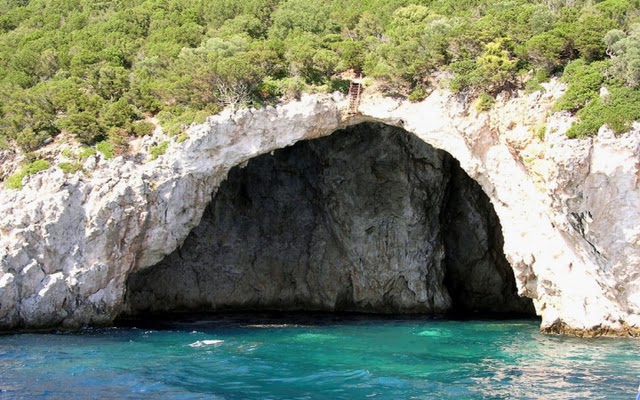Quck answer
Caves are incredibly cool natural formations. They provide unique and fascinating environments that are home to a wide variety of plants, animals, and geological wonders. Caves offer a glimpse into Earth’s history, with their intricate formations and ancient rock formations. They also serve as important scientific research sites, offering valuable insights into climate change, geology, and biodiversity. Caves are also popular attractions for adventure seekers and tourists, offering opportunities for exploration, cave diving, and spelunking. With their mysterious beauty and important ecological role, caves are undeniably cool.

Imagine this. It’s hundreds of years ago, and you’re hunting in the woods of what is now the eastern part of Kentucky. You spot a bear and start to follow it. You track it through thick forests, across fields, and up and down hills.
Then, it mysteriously disappears. It seems to have vanished. Where could it have gone? You continue to follow its footprints and soon come across something even more extraordinary than a wild bear. It’s a massive opening in the ground. What could it be? A cave entrance!
That might have been exactly how the world’s longest cave system—known as Mammoth Cave—was discovered. Today, geologists know that Mammoth Cave extends almost 400 miles with unexplored sections!
Kentucky is a fantastic place to explore caves. Did you know there’s a special word for the activity of cave exploration? It’s called spelunking! Isn’t that a funny word? Would you like to be a spelunker?
Of course, there are many other great places for spelunking in the U.S. Two of these are Tennessee and Missouri. Tennessee has nearly 10,000 caves and Missouri has over 6,000. Around the world, there are millions of caves to be found.
Have you ever WONDERed how caves are formed? They tend to be found in areas with limestone or dolomite rock and underground streams. Scientists refer to these areas as karst areas. When it rains in karst areas, water seeps through cracks in the rock. Then, it combines with carbon dioxide to create a weak form of acid.
Over long periods of time (sometimes millions of years), this acid slowly erodes the rock and creates hollow spaces. These hollow spaces gradually grow and connect to form caves.
Of course, caves can also form in other ways. Along coastlines, the constant force of waves crashing against the base of a cliff can erode soft rock and create sea caves. Special caves called lava tubes can form when the edge of a lava flow cools faster than the center, resulting in a crust that forms a tube-like shape. Caves can also appear in areas where bacteria consume oil deposits and produce a gas that combines with oxygen to form a strong acid that erodes the rock.
If you decide to go spelunking, it might be a good idea to bring a jacket with you. Caves can be cool inside. How cool? That depends on the cave’s location. The temperature in caves tends to remain constant throughout the year, as they are underground and not affected by surface weather conditions.
The temperature of a cave is usually similar to the average annual temperature of the region where it is located. For example, caves in Texas can be as warm as 70º F. Caves in Missouri might range from 55º F to 60º F. Caves in Wisconsin might be a chilly 50º F. Brrr! Wherever you go spelunking, make sure to do your own research and be prepared!
Give It a Try
Ready to venture underground and explore caves in more detail? Ask a friend or family member to join you as you try out one or more of the following activities:
- Are there any caves in your local area? Ask an adult friend or family member to take you on a trip to a nearby cave. Maybe your class could even go on a school trip to a cave one day. Before you go, do some research on the internet to find out more about the cave you’re going to visit. What are its main features? How big is it? What can you expect to see there? Also, look up the average annual temperature for your area. Use that temperature as a reference point and compare it to the temperature inside the cave you’re visiting. Is it similar? Talk to cave tour guides about the temperature inside the cave. How much does it change throughout the year? Would the cave be a comfortable place to live all year round? Compare its temperature to the extreme temperatures you experience throughout the year. Would it be a cool place to relax in the summer heat? What about the winter? Would it be a warm place to snuggle up on the coldest nights?
- Take a look at some amazing caves online. Visit National Geographic to see their photo gallery of cave exploration. Aren’t the pictures incredible? Do they make you want to explore caves? Why or why not? What would excite you about cave exploration? What might scare you? What do you think you would find in the caves shown in the pictures? Discuss these questions with a friend or family member.
- The underground world can be fascinating and awe-inspiring. Go online and check out The Ten Most Beautiful Caves in the World. From an Italian grotto to a cave with starry lights, you’ll be amazed by the incredible wonders that can be found beneath the Earth’s surface. Which of these caves would you most like to visit? Why? Do you think there are even more amazing and exciting caves waiting to be discovered underground? If you could go exploring anywhere in search of new, magnificent caves, where would you go? Write a paragraph explaining your choice.





Leave a Reply